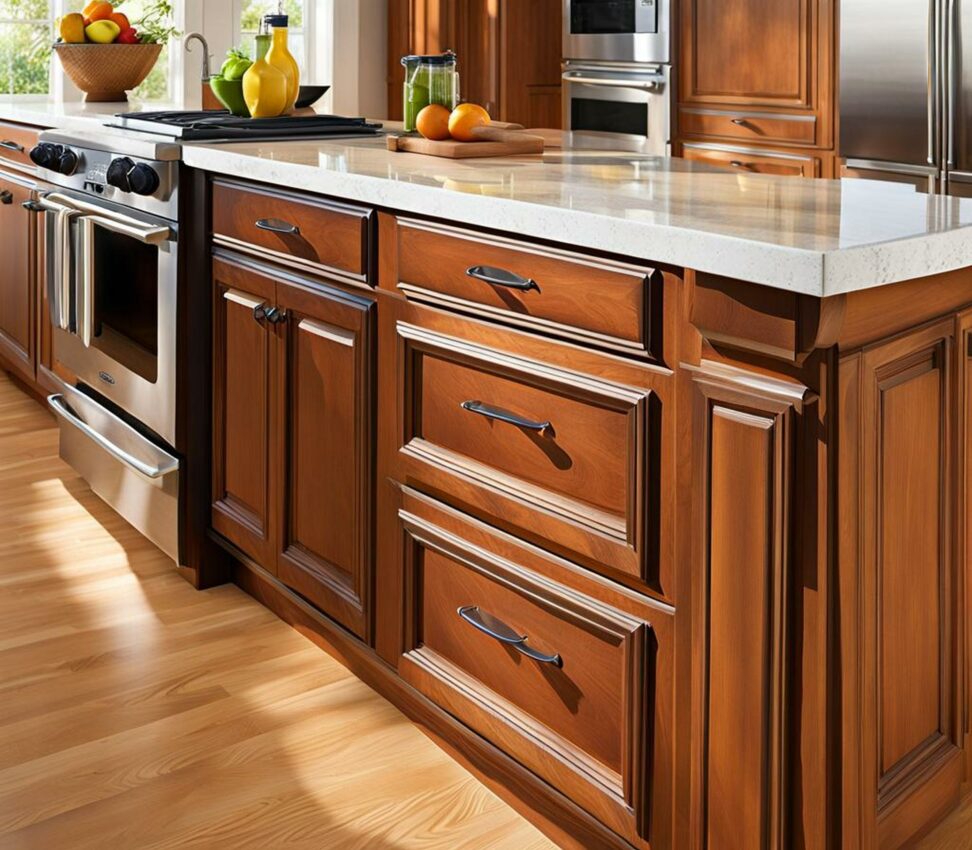The Beginner's Guide to DIY Kitchen Cabinet Scratch Repair
Has your kitchen been looking a little worse for wear lately? Those once-pristine cabinet doors and drawers now marred by unsightly scratches and scuffs? Before you resort to a full kitchen remodel or cabinet replacement, try restoring them yourself with a DIY cabinet scratch repair kit.
Repairing minor cabinet scratches is a budget-friendly way to breathe new life into your kitchen. With some simple supplies and techniques, even first-timers can make scratched-up cabinets look brand new again in just a few hours.

Assessing Cabinet Damage
The first step is examining the scratches on your cabinets to determine if a DIY repair is feasible. Surface level scratches that only affect the cabinet's finish can easily be corrected with touch up kits. However, deeper scratches or extensive finish damage may require professional refinishing or cabinet replacement.
What Kinds of Scratches Can Be Repaired?
DIY scratch repair is ideal for minor imperfections like:
- Light surface scratches that don't expose the bare wood underneath
- Small chips or dings along cabinet edges and corners
- Multiple minor scratches affecting the overall look of cabinet doors
When to Consider Cabinet Refinishing or Replacement
For more serious cabinet damage like:
- Deep scratches that expose large areas of bare wood
- Gouges or punctures that penetrate the veneer surface
- Extensive finish deterioration and peeling veneer
Professional refinishing or replacement may be needed to properly repair the cabinets.
Scratch Repair Kit Essentials
To fix minor scratches yourself, you'll need a few supplies:
- Colored wax filler sticks to match wood cabinet stains
- Fine tip markers and touch up crayons
- Clear furniture wax polish
- Assorted grit sandpaper sheets and pads
- Plastic applicator sticks and mixing container
Selecting the Right Kit for Your Cabinets
Choosing the right scratch repair kit for your specific cabinet finish is important:
- Consider cabinet door material - real wood, wood veneer, thermofoil?
- Match kit color to your cabinets' existing stain
- Buy multiple kits if you have varying cabinet finishes
Prepping the Damaged Area
Before applying fillers and touch up markers, prepare the scratched area:
- Clean cabinet door with mild detergent and water
- Lightly sand scratch and surrounding finish
- Wipe away any sanding dust with a tack cloth
Sanding Tips
- Use a fine 220-320 grit sandpaper
- Avoid sanding down to the bare wood
- Feather out sanding for a smooth transition
Applying Fillers and Markers
Next, conceal scratches using colored fillers and touch up markers:
- Fill deeper scratches with the colored wax stick
- Use crayons or markers for thin, hairline scratches
- Tap and scrape away any excess filler flush with the surface
- Blend and feather edges into surrounding finish
Matching Color and Grain Pattern
- Test on an inconspicuous spot first
- Layer colors and grains for a natural look
- Heat filler tip to better blend with wood stain
Smoothing and Finishing Touch Ups
To complete the repair:
- Allow filler/marker to fully dry
- Buff and polish the touch up area with wax
- Lightly sand again if needed to smooth and level
Optional Clear Top Coat
For added protection, apply thin coats of clear satin polyurethane over the touch up area, lightly sanding between each.
Preventing Future Cabinet Scratches
To maintain your cabinets' renewed look:
- Attach felt pads to bottom of chair legs
- Install rubber bumpers on cabinet doors/drawers
- Always open doors and drawers slowly and carefully
- Clean with a soft cloth and non-abrasive cleaner
- Gently clean cabinets regularly
- Re-apply protective pads and bumpers as needed
- Touch up any new minor scratches right away
With some simple supplies, techniques, and elbow grease, you can erase those pesky scratches from your kitchen cabinets. Repairing minor damage yourself not only saves money over refinishing or replacement, but gives your kitchen a facelift without the mess and stress of a major renovation.